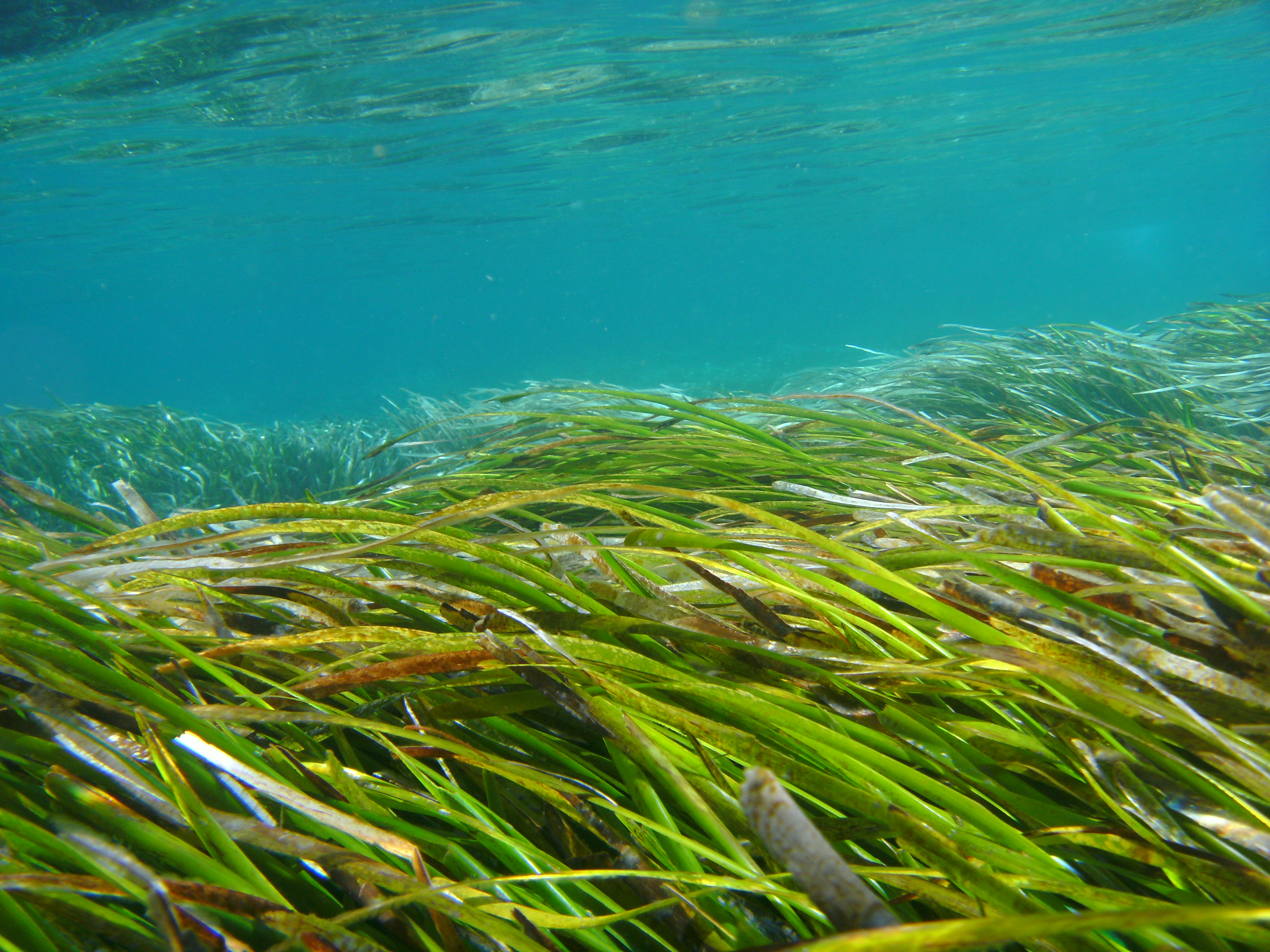What are Seagrasses?
Seagrasses are underwater flowering plants that form vast meadows along the coast of six continents, from the tip of South America to the Russian Arctic. They provide nurseries, shelter, and food for a variety of commercially, recreationally, and ecologically important species (e.g., fish, sea turtles, dugong, manatee, seahorses, crabs). Additionally, seagrasses filter excess nutrients, contaminants (including bacteria and viruses), and sediments, improving the clarity and health of coastal waters. Seagrasses form a mosaic with other habitats –in the tropics to coral reefs and mangrove forests, and in temperate waters to salt marshes, kelp forests, and oyster reefs– that rely on seagrass meadows to provide protection, food, and a supply of juveniles to keep them working.
Alas, because seagrasses exist at the land-sea interface that is also home to nearly one-fifth of the world’s human population, seagrasses are threatened by numerous anthropogenic impacts such as shoreline development, agriculture and aquaculture, dredging, and anchoring, as well as rising temperatures associated with global climate change. While we still don’t know the global extent of seagrasses, it is estimated that we have lost over 20% of seagrass meadows globally since 1880. Protecting and restoring seagrasses therefore requires understanding where they are, how they work, and what pressures are acting on them.
Assessing a Critical Coastal Resource Worldwide
SeagrassNet is the largest and longest-running monitoring program to document the status of seagrass resources and how they are changing over time in response to a changing environment. Our ultimate aim is to preserve valuable seagrass ecosystems by increasing scientific knowledge and public awareness of this threatened coastal resource.
Established in 2001 by Drs. Fred Short, Eva Marie Koch and Rob Coles in the Western Pacific, SeagrassNet has generated over 100,000 on-the-ground observations in 35 countries, establishing an unparalleled global baseline for seagrass systems. In 2024, SeagrassNet has found a new home at the Center for Coastal Studies in Provincetown, MA, USA.
From Brazil to Canada to East Africa and many Western Pacific island nations, SeagrassNet is currently collecting information with the goal of raising awareness of seagrasses–which the UN recently called the “forgotten ecosystem”--and providing a global “report card” on the health of seagrass habitats. Our collaborators are scientists, naturalists and managers from participating countries who conduct standardized quarterly sampling of key indicators of seagrass meadows, including their cover, density, composition, and structure, alongside measurements of light and temperature, two critical determinants of seagrass health.
Download the SeagrassNet Manual here.
Want to become a part of SeagrassNet? Email us here.
Program Director: Dr. Agnes Mittermayr
Center for Coastal Studies
5 Holway Ave
Provincetown, MA 02642
USA
seagrassnet@coastalstudies.org
Co-Principal Investigators:
